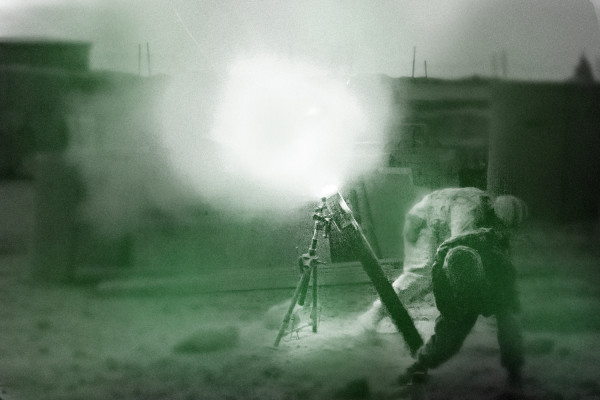

On July 31, 2007, soldiers with the Army’s 2nd Battalion, 503rd Infantry Regiment at Vehicle Patrol Base Seray in Chowkay Valley, Afghanistan, came under heavy attack.
Staff Sgt. Christopher Upp led a small group of soldiers toward the mortar pit where the platoon’s 120mm mortar was positioned. Because of the weapon’s range — 7,200 meters — and its ability to fire devastating rounds without line of sight, the mortar and the men manning it became targets.
During the attack an enemy mortar round hit near the pit, killing 1st Lt. Benjamin Hall.
As the mortarmen ran toward the firing pit they were forced to the ground more than once by enemy small-arms fire and rocket-propelled grenades. Once they reached the weapon system, a rocket-propelled grenade exploded nearby, damaging the mortar’s bipod. Shrapnel from the explosion tore a deep gash in Upp’s left forearm — the wound required 17 stitches.
With the bipod damaged, Upp had to use his hands, and later his shoulders when the weapon became too hot, to heft the 110-pound cannon.

Staff Sgt Christopher Upp, far right, poses with his fellow soldiers at Vehicle Patrol Base Seray in Chowkay Valley, Afghanistan.Photo courtesy of Christopher Upp
According to his Silver Star citation, Upp accurately fired 75 rounds at enemy positions, literally aiming by hand, all while under constant fire. The battle lasted just over an hour and during that time, the enemy launched more than ten 107mm rockets, over a dozen rocket-propelled grenades, and rained down fire from at least two machine gun positions.
“A great officer was killed,” Upp told Stars and Stripes during an award ceremony on Sept. 24, 2008, where he received the Silver Star Medal for his actions that day. “This is for him really.”
Related: UNSUNG HEROES: This soldier killed 11 insurgents while bleeding from a severed artery »
His citation goes on to note that Upp ignored his own wounds and helped carry his fallen commander to the awaiting medical evacuation, refusing to leave the patrol base in order to stay behind in case the enemy attacked again.
According to Lt. Col. Bill Ostlund, the unit’s battalion commander, the most dangerous place on a U.S. compound was the mortar pit.
“They (the mortar pits) were always targets,” said Ostlund. “Because they’re what kept off the bases.”
CORRECTION: A previous version of this story incorrectly attributed a quote to 1st Lt. Benjamin Hall. (4/28/2016; 11:24 am)
